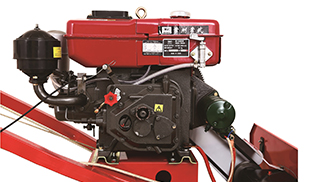Oct . 13, 2024 14:32 Back to list
Understanding the Components and Functionality of Brake Drums in Automotive Systems
Understanding Brake Drum Definition and Function
When discussing automotive braking systems, one essential component that often comes up is the brake drum. To appreciate the significance of brake drums in modern vehicles, it's important to understand what they are, their function, and how they contribute to overall vehicle safety.
What is a Brake Drum?
A brake drum is a cylindrical component that functions as part of a drum brake system. This part is typically made from cast iron or aluminum and is designed to fit snugly around the brake shoes. Unlike disc brakes, which utilize a flat rotor, the drum brake operates using a related, enclosed design that allows for efficient braking using friction.
When the driver depresses the brake pedal, brake fluid is forced into the brake cylinders, pushing the brake shoes outward against the inner surface of the drum. This contact generates friction that slows down and eventually stops the vehicle. Understanding this interaction is crucial for recognizing the efficiency and presence of drum brake systems in many vehicles, particularly older models and some newer commercial vehicles.
The Mechanics of Brake Drums
The anatomy of a brake drum consists of several key components, including the drum itself, the brake shoes, the wheel cylinder, and the return springs. The drum needs to be precisely engineered to withstand the immense forces experienced during braking without warping or cracking. When the brake shoes press against the inner surface of the drum, the friction material on the shoes creates a considerable amount of heat, a reason why high-temperature resistance is integral to the design of brake drums.
The return springs play a vital role as they pull the brake shoes back into a resting position once the brake pedal is released. This mechanism ensures minimal friction when the brakes are not engaged, which helps extend the life of both the drum and the shoes.
brake drum definition

Advantages of Brake Drums
One of the benefits of drum brakes is their ability to provide more braking force. This characteristic makes them suitable for vehicles that often operate under heavy load conditions, such as trucks and buses. Additionally, drum brakes offer a self-energizing effect, meaning that the design allows the drum's rotation to assist in pressing the shoes more firmly against the drum as the vehicle moves forward, enhancing braking efficiency.
Furthermore, brake drums are generally less expensive to manufacture and replace compared to disc brakes. They often have a longer lifespan when employed under conditions where they do not experience excessive heat buildup, making them an attractive option for many fleet vehicles.
Disadvantages of Brake Drums
Despite their advantages, brake drums also come with some notable disadvantages. One significant drawback is their performance under extreme braking conditions. Brake drums tend to retain heat, which can lead to brake fade—an increase in stopping distance due to the reduced effectiveness of the brakes when excessively heated. This propensity for heat retention means that drum brakes can become impractical in high-performance or frequently stop-and-go traffic situations.
Additionally, drum brakes require more maintenance than disc brakes. The enclosed design makes it harder to visualize wear, and if one brake shoe wears down faster than the other, it can cause issues like pulling to one side when braking. Regular inspections are essential to ensure safety and performance.
Conclusion
In summary, the brake drum is a key component of the drum brake system, known for its cylindrical shape and role in generating friction necessary for slowing and stopping a vehicle. While they offer advantages such as cost-effectiveness and superior braking force under certain conditions, they also face challenges regarding heat retention and maintenance. Understanding the function and intricacies of brake drums not only highlights the importance of vehicle safety but also encourages responsible vehicle upkeep and timely inspections. As technology evolves, the debate between drum and disc brakes continues, and both types will remain essential in automotive design for the foreseeable future.
-
Scania Brake Drums: OEM Quality for Optimal Safety & Durability
NewsAug.16,2025
-
R.V.I: Advanced Remote Visual Inspection for Precision
NewsAug.15,2025
-
Discover HYUNDA: Innovative Vehicles, Equipment & Solutions
NewsAug.14,2025
-
R.V.I: Unlock Advanced Insights & Real-time Performance
NewsAug.13,2025
-
Kamaz Brake Drum: Durable & Reliable for Heavy Duty Trucks
NewsAug.12,2025
-
Heavy Duty Iveco Brake Drum - Premium Quality & Safety
NewsAug.11,2025
